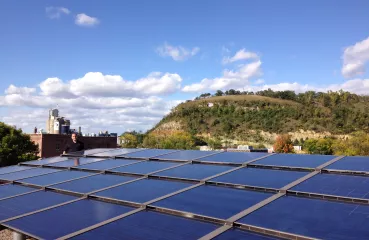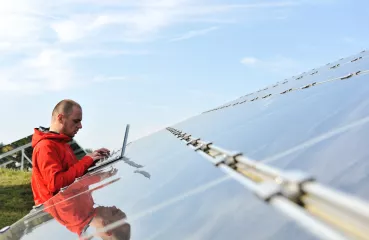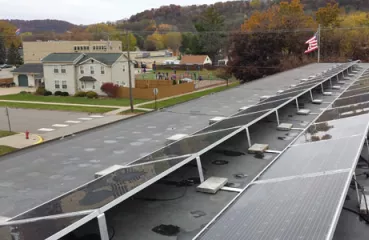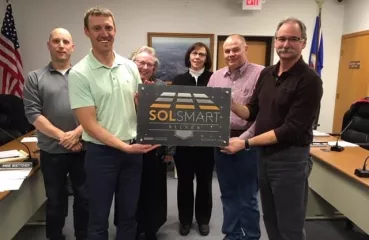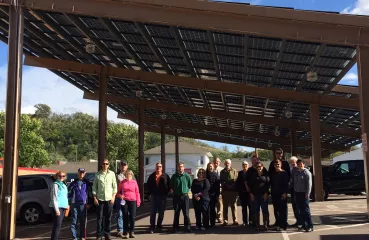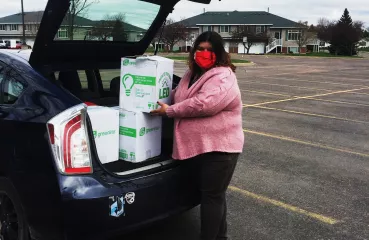A sprawling community solar installation on the top floor of the A Ramp in downtown Minneapolis offers the most recent example of a Minnesota project combining solar panels and parking.
On a rooftop with views of Target Field and Target Center, Cooperative Energy Futures built a 1.3-megawatt solar garden subscribed mainly by low-income residents and the Minnesota Department of Transportation. The solar carport allows parking to continue underneath the arrays as they capture energy from the sun.
The A Ramp is among a handful of projects where public entities have built solar carports. The agencies and developers who installed them say solar carports cost more than traditional solar projects but pay off with other dividends that can make the investment worth it.

